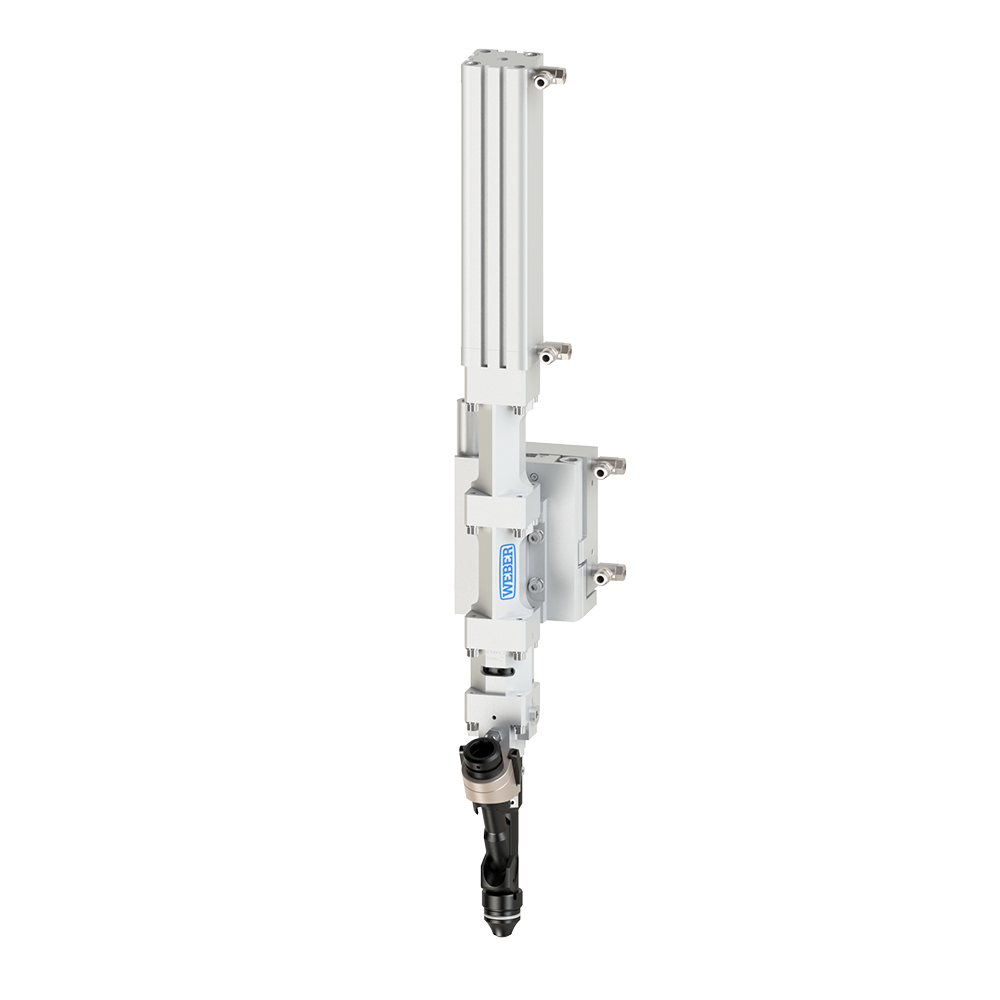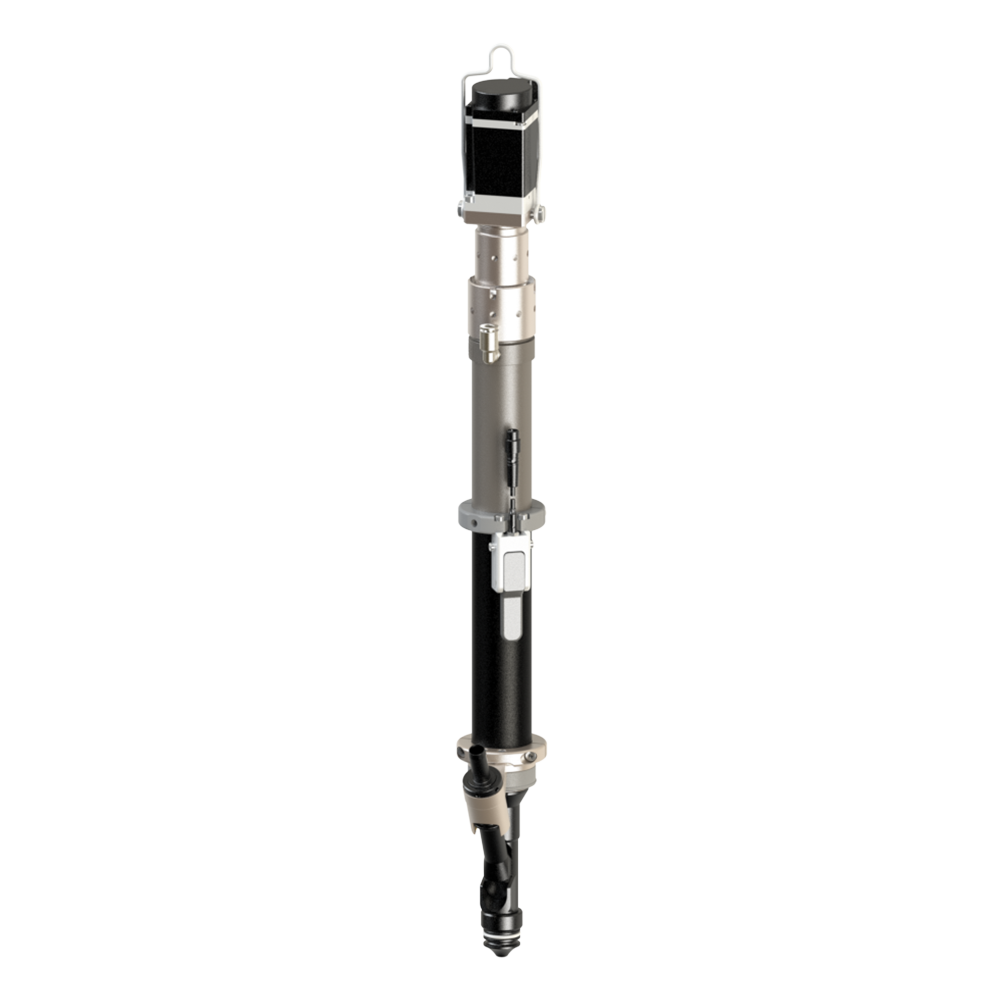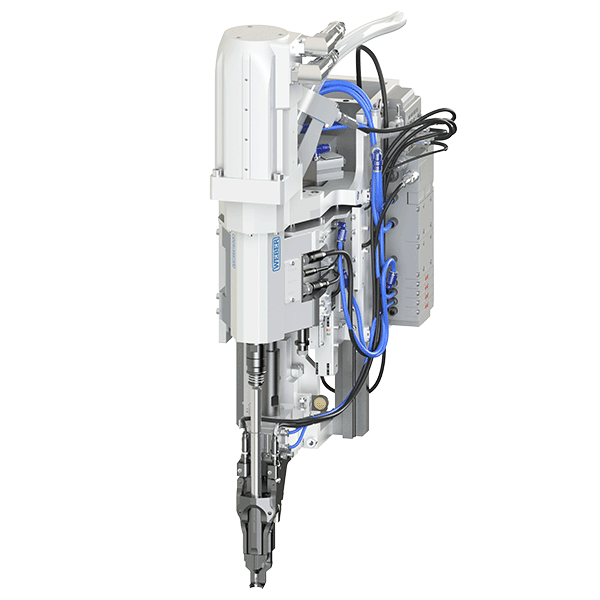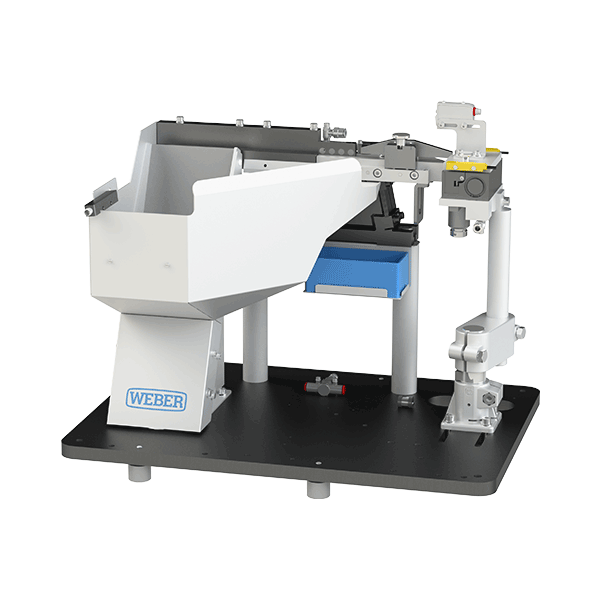As is well known, the whole is more than the sum of its parts. WEBER screw systems also grow with the demands that companies place on automated assembly processes. Stationary screwdriving technology is used when connection processes become more complex, cycle rates shorter, and quality requirements greater. WEBER’s variably configurable stationary screwdriving spindles adapt to all screwdriving cases: Whether nozzles, stroke lengths, sensors, or drive technology – depending on the task and screwdriving process, WEBER screw automation offers tailored solutions. The effort required to change tools on the screwdriving units remains low – thanks to the tool-free change of the screwdriving set.
Fixtured screwdriving systems
Our fixtured screwdriving systems overview

- With automatic feed for shaft-heavy screws and pins
- Tool-free bit change
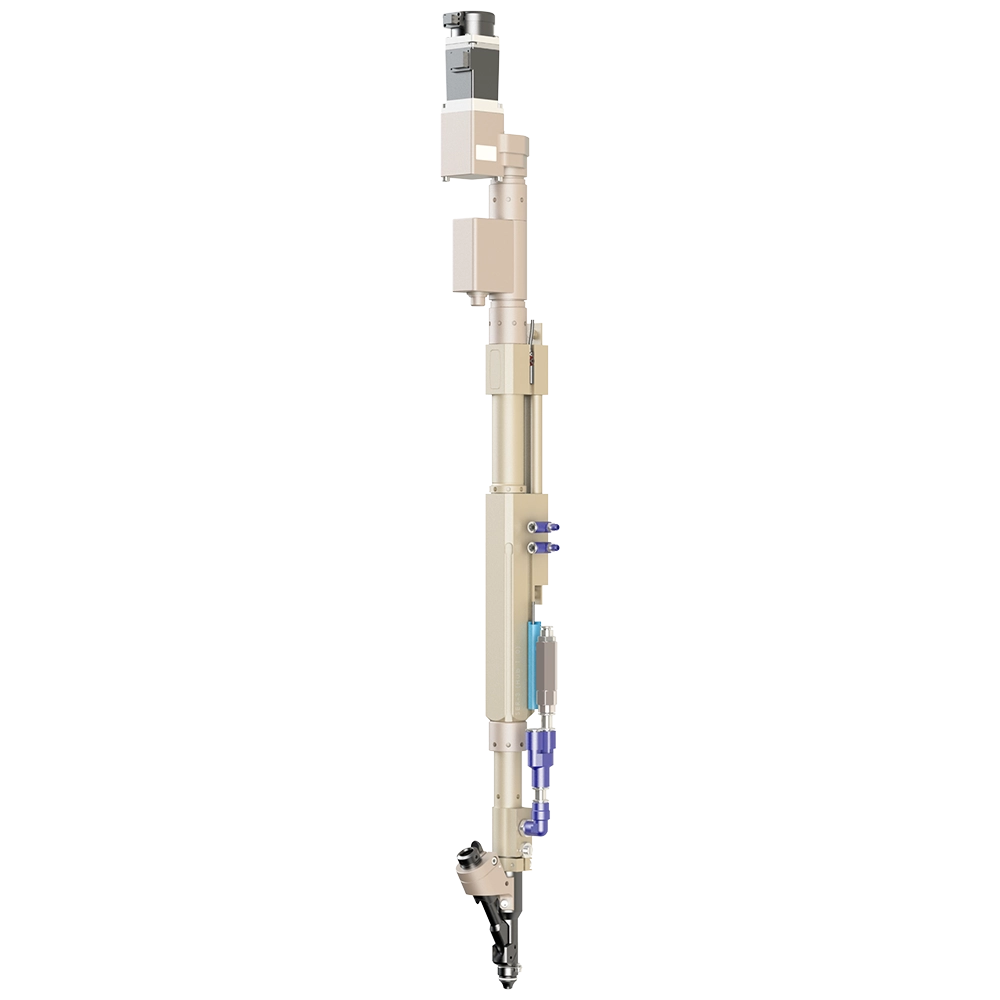
- With automatic feeding system for screws and pins
- For interference contours up to 150 mm
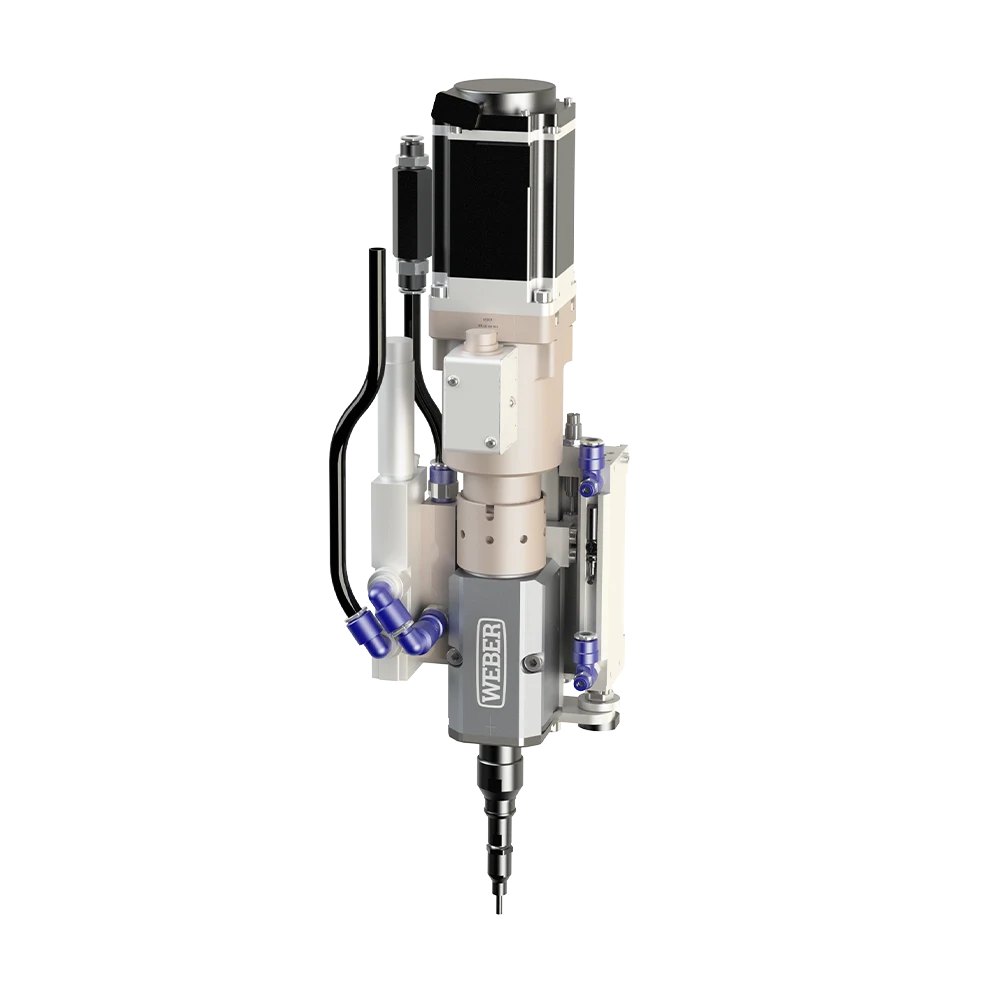
- Pick & Place Screwdriver for All Fasteners
- Application for lightweight robots

- For lightweight robots and coexisting HRC applications
- For shank-heavy screws
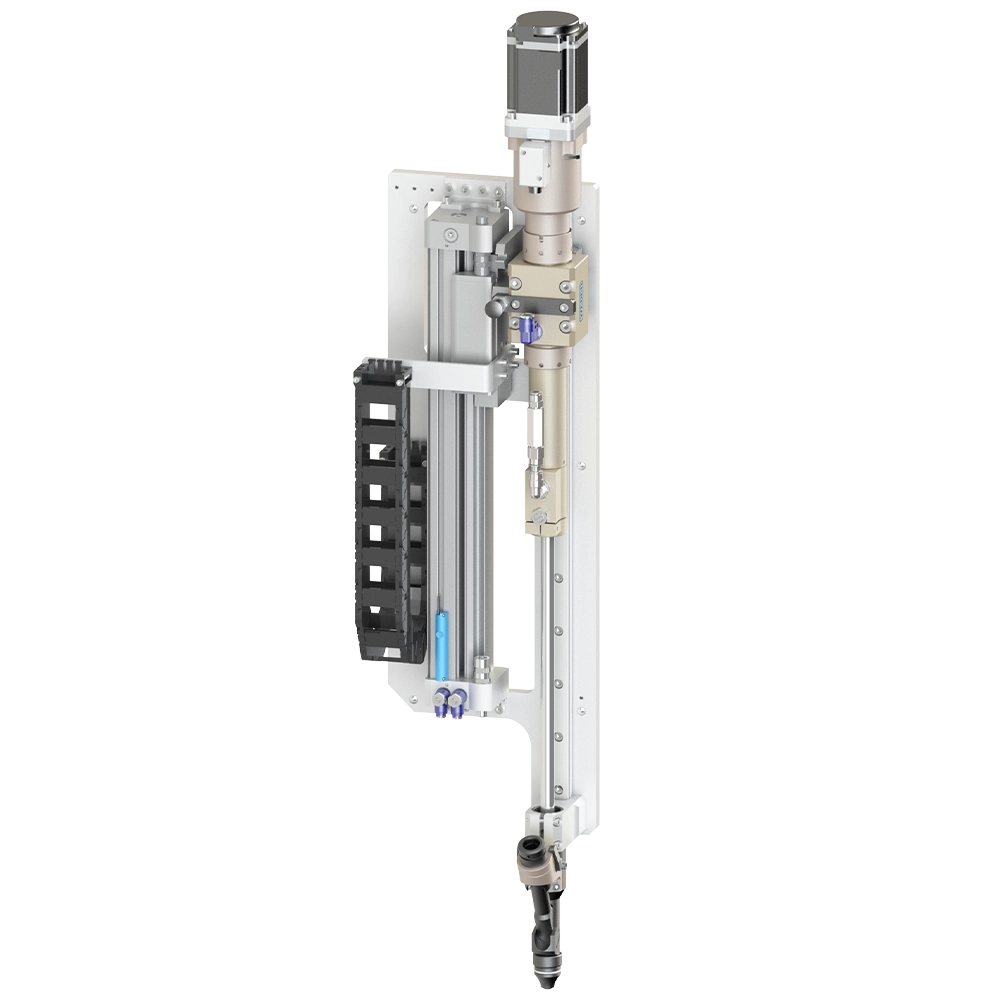
- With automatic feed for shaft-heavy screws and pins
- For interference contours from 150 mm

- With automatic feeding systems for nuts and top-heavy screws
- For interference contours up to 150 mm
Further information on fixtured screwdriving technology
Fixtured screwdrivers SER / SEB
The stationary screwdrivers SEB and SER are united by their flexibility. The modular design allows for quick conversion to other modules and drives. The SER screwdriving system has a screwdriver stroke. The SEB additionally has an integrated feed stroke.
Fixtured screwdriver SEV
The stationary screwdriver SEV features vacuum technology. This allows screwdriving at difficult-to-access positions to be carried out reliably. The closed design ensures exceptionally long service life.
Fixtured screwdriver SEV-P
The stationary screwdriver SEV-P is designed for the application of pick place solutions. As with the MRC screwdriving system, the screwdriving unit is designed for applications with lightweight robots. The use of a change station with several different screwdriving tools to perform various screwdriving tasks with just one system is optionally possible.
Fixtured screwdriver SEV-L / SER-L
The screwdriving systems are used in association with lightweight robots. With vacuum technology option for recessed screwdriving locations (SEV-L)
Fixtured screwdriver SEV-E
The screwdriving system is characterized by the ability to perform screwdriving at very difficult-to-access screwdriving locations using vacuum technology. Additionally, electronically controlled EC motors with integrated transducers can be supplied. Further variability is achieved through a compact version.
Fixtured screwdriver SEM / SEK
Analogous to the HSM/HSK hand screwdrivers, WEBER offers the SEM and SEK models in the field of stationary screwdriving technology. The SEM variant is suitable for processing DIN-compliant nuts, flanges, and special nuts. The SEK can be used to assemble top-heavy screws. Both models use vacuum technology to reliably feed the fastening elements.
Frequently asked questions about screwdriving systems!
What is the cycle time for a fully automated screwdriver with feed unit?
A cycle time of <1 s is possible for an automated screwdriving process. This is the “start – start” time, i.e. from start of screwdriving, through feeding of the new elements until “ready” for a new screwdriving process.
Which elements can be processed/screwed by a screwdriving station for fastening?
Screws, bolts, pins, nuts and much more. Is your element not listed here? Then please ask your local contact.
Where is fixtured screwdriving used?
Fixtured screwdriving from WEBER is used for complex joining processes with short cycle times and high quality requirements. These fully automated screwdriving units or screwdriving spindles become economically viable from approx. 60,000 screwdriving processes per year. The automation allows the high quality requirements for the screwdriving result to be met and reproduced. Areas of application can be found on the WEBER website, in the Applications section.
How fast does a screw move in the feed hose?
Die Geschwindigkeit ist abhängig von dem zu fördernden Element. Als Richtwert kann von einer Geschwindigkeit von 10 m/s ausgegangen werden.
How does a screwdriving system with an automatic screw feed system work?
On a complete screwdriving system consisting of feed unit and screwdriving unit, the screws can be filled into the feed unit as bulk goods. Different fixtures ensure that the fasteners are in the correct orientation and separate them with a separation unit – the escapement. From the escapement, one fastener at a time is blown towards the screwdriving unit through a feed hose. Depending on the screw geometry, an appropriate technology is used for transporting the screw into a mouthpiece (aligning guide). From there, the screwdriving unit can screw the fastener into the component.
What is a fixtured screwdriver?
A WEBER fixtured screwdriver is a screwdriving unit or screwdriving spindle which is not held and controlled manually, but mounted on a robot, axis system or stationary fixture. In combination with a feed system, this allows different fasteners to be screwed in within short cycle times.
More product categories
WEBER Schraubautomaten
WEBER Schraubautomaten GmbH is a family-run and innovative company that attaches great importance to the sustainable design of the value chain. The result is high-quality products with maximum process reliability that make production processes more efficient. Your success is our success.


